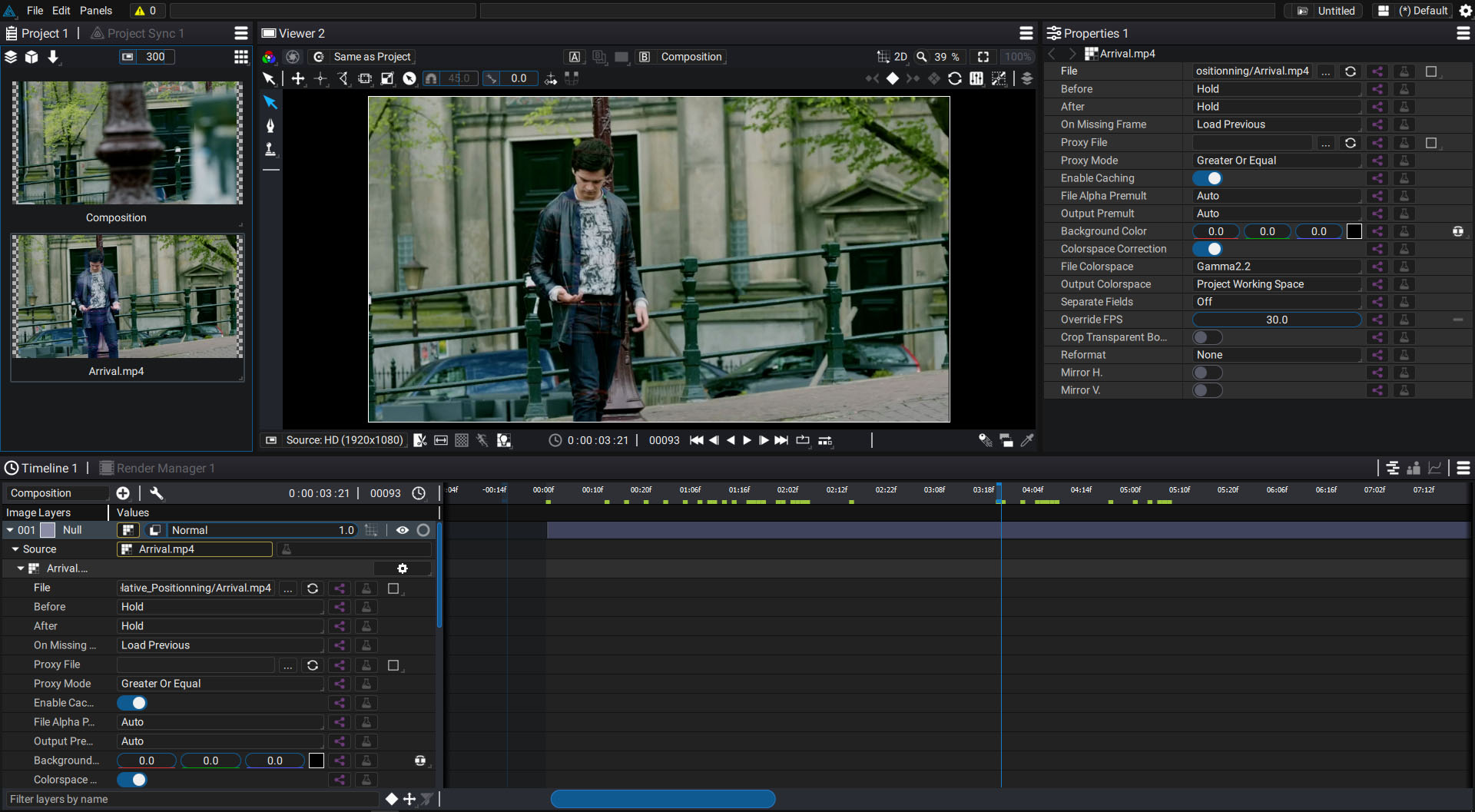Source
A layer is represented by a simple line in the stack that allows you to define its height in the stack as well as the appearance of the graphic element it carries.
We can define a layer by addressing two questions:
- What does it look like?
- Where is it located?
The layer Source is the answer to the first question. The Source parameter allows you to connect to a graphic source. The word connect is very important here because the layer does not actually contain the Source, rather it connects to it. The Source is therefore completely decorrelated from the transformations or modifiers that are applied to it. This means that the connection can be modified in order to quickly switch to a different image without affecting the animations or modifiers that were applied.
A layer can therefore exist without its Source parameter being connected to anything. In this case, its existence will be materialized in the Viewer by a simple cross and the term Null will be used to describe it.

The second question, “Where is it located?” is answered by the Transform parameters that define layer Position, Rotation, Scale and Skew.
Two connection slots
The Source parameter of a layer is of type Image. This means that it can be connected to an element producing an image, like a Reader or Generator.
Two connection slots allow this operation to be carried out:
- When unfolding a layer, there is a Source section containing two slots; the left slot allows you to define the connected Source and the right slot allows you to add Modifiers onto it.
- On the layer main line there is also a small connection slot. This slot is a copy of the previous one, allowing you to quickly change a Source without having to unfold the layer.
Keep in mind that you can drag an element from the Project Panel to either of these two slots. The result will be the same, as these two elements are in fact one.
Linking a Source by clicking on the slot
Drag and drop is not the only way to link an element to a Source. By clicking on the slot, a Quad Menu appears, allowing you to:
- Disconnect the current referenced Source (top left)
- Connect to one of the Readers present in the Project Panel through the list at the bottom left
- Create and connect to a new Generator, using the list that displays all of them at the bottom right
Linking to a new Generator
Choosing a Generator on this list will do two things:
- Create a new Generator
- Link it as the layer Source
Generators are not shown in the Project Panel because it is possible to produce hundreds of them when creating a project. Statistically, there will be a much higher number of Generators than Readers.
This action generates a new Generator and connects it to the Source so that it can be manipulated. This Generator can also be used by several layers through Linking and Sharing.
Connecting a Reader
To inspect the connected element as a Source, simply unfold its contents in the Stack or navigate through this hierarchy in the Properties Panel.
If a Reader is connected, you will notice that by default all its parameters have a purple Shared logo. This is because the Source connects to the Reader rather than making a local copy of it and it displays its settings in the Stack. Any changes made in the Stack will have the same effect as if you had selected the Reader in the Project Panel and changed the settings in the Properties Panel.

Keep this setting in mind. If your Reader is used by several layers as a Source, any change in one of its parameters will be reflected in all these layers. But, it is possible to locally break this Sharing link to create a local override of a parameter.
To learn more about the concept of sharing, see the dedicated section, as well as the section dealing with override through Unsharing.